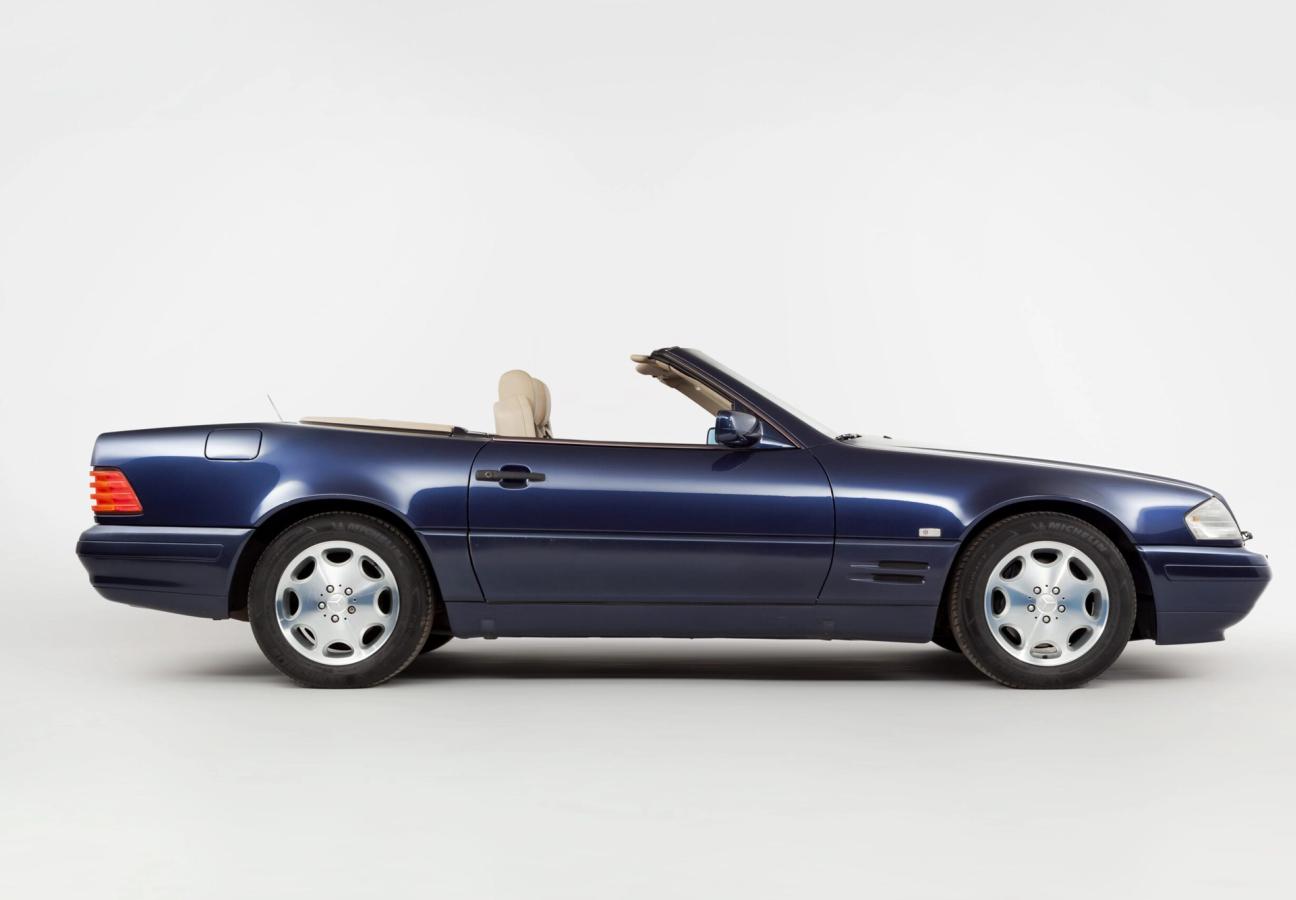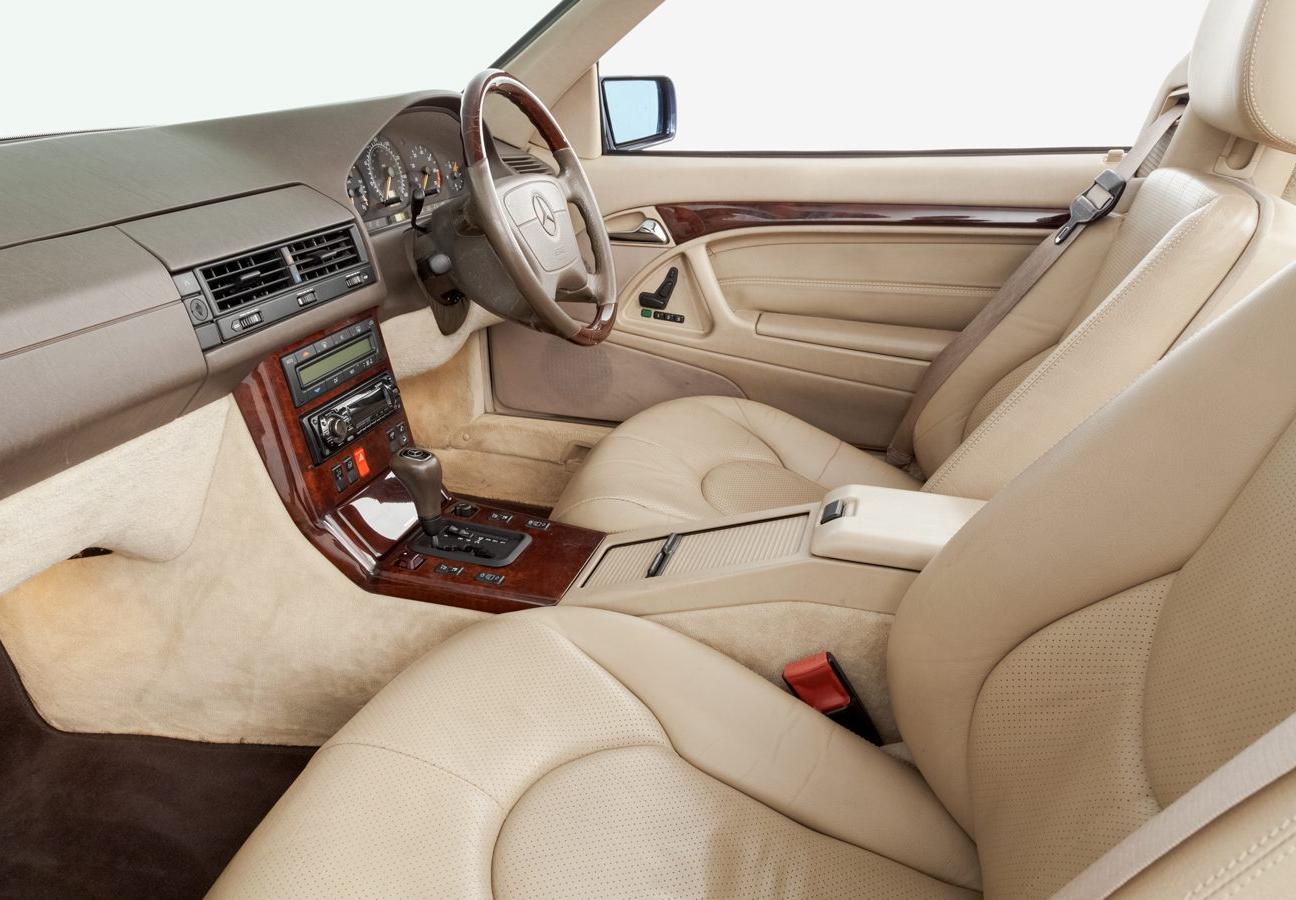

Words: Jonathan Wells
Royals have long created a stir behind the steering wheel. Remember Prince Harry, dressed to the nines in his velvet tuxedo, slipping behind the wheel of an electric Jaguar E-Type on his wedding day? Or Prince Philip, only relinquishing his long-held driving license last year at the not-so tender age of 97? How about Prince Charles, tanking around London in the Aston Martin DB6 his parents got him for his 21st?
They’re all momentous four-wheel affairs. But perhaps Princess Diana’s choice in motors is the most memorable among the royal family. In 1991, having tired of her stately Jaguar XJS, the People’s Princess traded it in for something new. Her choice sparked outcry, for it was the first time a British royal had not opted for a British car. What’s more, it was German. But we remain firm defenders of Di’s favoured wheels; the inimitable, unstoppable Mercedes-Benz R129 SL.
And, although all the media attention and nationalistic naysayers drove Princess Diana to drive her R129 back to Germany, it still made an impression. But how could it have failed to, looking like this? Many of Mercedes’ late-eighties cars were earmarked as modern classics as soon as they rolled off the production line. And, with its boxy elegance and sporty appeal, the road ahead for the R129 was clearer than it had been for any other.
This was the fourth generation of the SL, and remained in rude production from its launch in 1989 until 2001. Its design was the work of Bruno Sacco, whose “vertical affinity” approach to design called for cars that wouldn’t be made immediately obsolete by their successors. He wanted each generation of SL to stand alone. And the R129 arguably stood higher than any other.

Over 200,000 R129s were made in just over a decade; sales given an early boost when the model won the 1990 Car Design Award. And this accolade didn’t just reward the car’s dynamic, elegant lines. It also lauded what was beneath the bodywork.
Safety, for instance, was paramount with the fourth generation SL. If the car was threatening to overturn, an automatic roll-over bar popped into place in under half a second. The seats were so meticulously designed to protect the driver that they included 20 individually patented inventions within their padded covers; including new three-point seat belt tensioners, side impact solutions and newly devised head rests.
This was a car with unbridled power — we’ll take a look under the bonnet in a minute — but it was also very aware of practicality. Sacco’s overall design, for example, had been created from scratch to ensure it adhered to new, more severe crash test regulations. The fact that he managed to make it look this good is simply testament to the man’s talents.
The R129 shifted its way through 13 different engines during its lifetime. But the number was far from unlucky for Mercedes-Benz, who kept refining the powertrain with every tweak of its sportster. When it first hit roads, the car was fitted with a catalytic converter as standard. Almost immediately, the 500 SL, an eight-cylinder option, became the most popular. But, in 1992, the 600 SL with its twelve-cylinder engine came tearing onto the scene, turning the petrolheads of motoring enthusiasts everywhere.
It was also, notably, the first Mercedes-Benz to be officially offered as an AMG version. The most rare of these, and a holy grail for a collector, is the SL 72 AMG, a 1995 model — boasting the most powerful V12 engine ever put into an SL at the time. The same year, a Mille Miglia edition celebrated the 40th anniversary of Stirling Moss’s win of the 1955 Italian road race — and one of the last special editions produced was built in 2002 to honour the iconic 1930s Silver Arrow race car.

Of course, one of the main draws for potential owners was not to be found under the bonnet, but rather up on the roof. The R129 marked the first time that the German carmaker gave one of its sports cars an automatic folding soft top. Like the model in these pictures, a R129 SL 500 for sale through 4 Star Classics, this roof could open and close within 30 seconds — all at the push of a button.
Beneath that folding top, the car’s interior is a product of its time. An early climate control system and lower centre console designed to hold cassette tapes are just two of the touches that qualify the R129 as a classic today. Or a modern classic, we should say. Because, while it may still lack the allure of some of the earlier SL models, it’s also wildly more affordable. A sound investment, then; endorsed by royalty and poised to appreciate significantly. What are we all waiting for?
Want more Mercedes-Benz history? We asked why the classic G-Wagen is such an iconic design…
Join the Gentleman’s Journal Clubhouse here.


